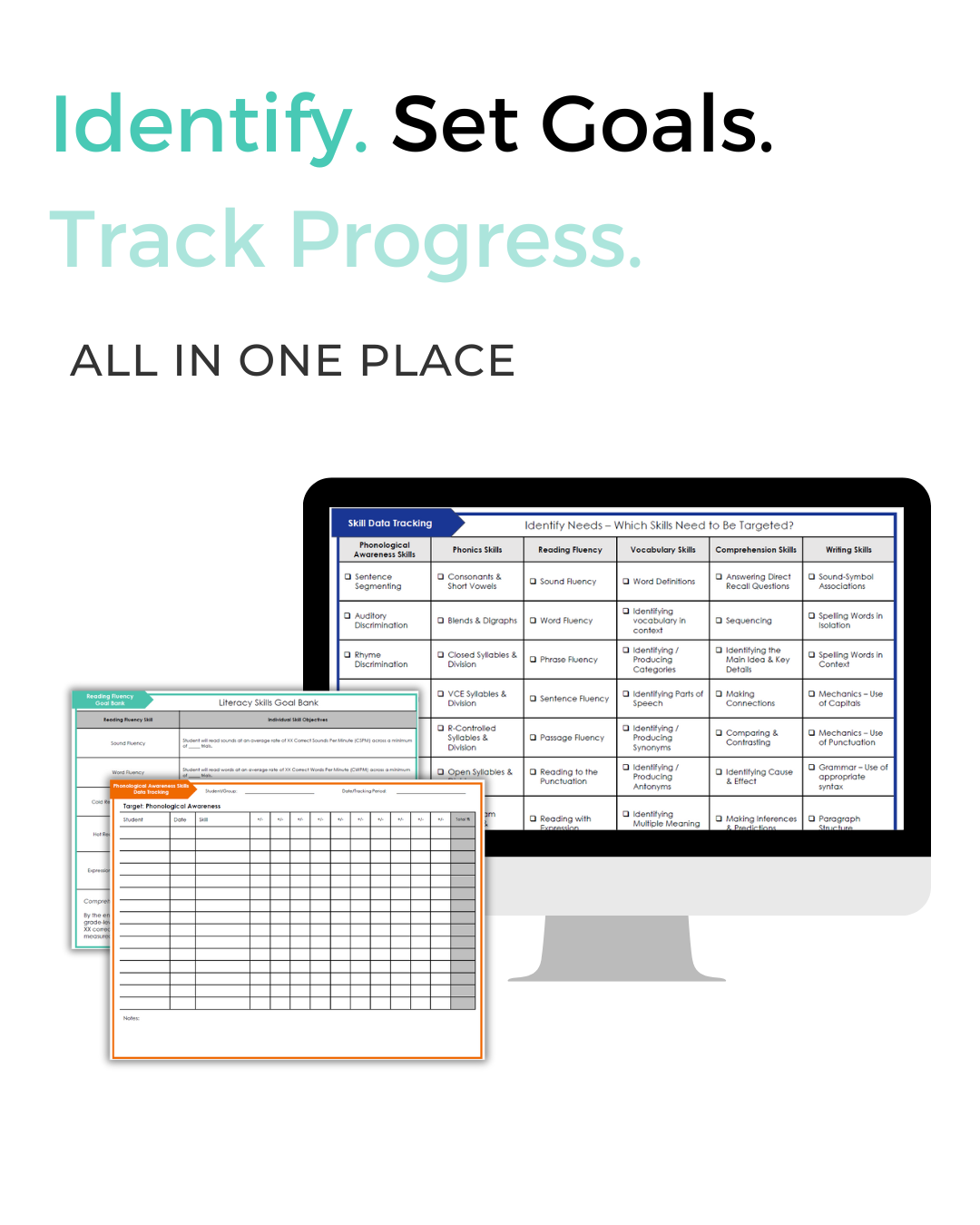Why We Must Track Data Effectively in Literacy Intervention
If you’ve ever felt like you’re spending more time collecting data than actually using it, you’re not alone.
Between assessments, spreadsheets, and progress reports, it can start to feel like data is stealing time from teaching, instead of supporting it.
But here’s the thing…
The right kind of data can completely transform your instruction.
The key is knowing what to track and why you’re tracking it.
The Real Problem with Progress Monitoring
Most of us are required to collect data. But… we aren’t always shown how to use it.
That’s why so much time and energy gets poured into assessments that don’t lead to any change in our instruction.
Data is supposed to clarify what students need next, not complicate your day.
So if the data you’re collecting isn’t helping you plan, set goals, or see growth, it might be time to rethink your system.
The Two Things You Must Do with Your Data
There are two questions every interventionist should be asking:
Does my data help me identify student needs and skill gaps?
If not, it’s not the right data. You need to clearly see where students are struggling, phonological awareness, phonics, vocabulary, fluency, or comprehension. So take a minute to reflect, does your data give you objective information for each of those areas?Does my data help me set measurable goals that guide instruction?
Once you know where the gaps are, those goals become your roadmap. Everything you plan and track should connect back to them. So take one more quick minute to reflect, what goals are you setting based on the current data you have.
When you start thinking this way, progress monitoring becomes part of your teaching, not something separate from it.
What This Looks Like in Practice
Let’s say your data shows that a student’s biggest gap is fluency.
You might set a goal around increasing correct words per minute and track that over time with quick passage readings.
Or if your data shows that vocabulary knowledge is lagging, you can track how often students use new words in context or recall word meanings.
In this data tracking sheet we have pictured, our student appears to be struggling with sound isolation and syllable segmenting (we can assume these difficulties are probably impacting spelling…so instead of just focusing on spelling, we can also make sure we are having the student segment syllables, isolate sounds, and then spell words!)
You don’t need to track everything, just the few data points that directly connect to the goals that are actually important.
That’s how data becomes useful, so it no longer just feels like a massive time suck.
Next Steps for You
To help you get started, we put together a free goal-setting and progress-monitoring resource you can download and use right away. It’s designed to help you identify what needs to be tracked, set goals, and track data using a simple yes/no response so you can see what needs the most support moving forward.
And if you’re ready to take this process even further, check out our Spotlight PD: Progress Monitoring Made Simple.
In just one hour, you will learn our 4-step process to:
Identify student needs
Set SOR-aligned goals
Track data efficiently
Adjust instruction based on what the data shows.
You’ll also get our Progress Monitoring Toolkit, packed with goal-setting prompts, tracking templates, and hundreds of progress monitoring probes you can use with students K-12!
Because when your data finally works for you, everything starts to click…your lessons, your goals, and your students’ growth!


